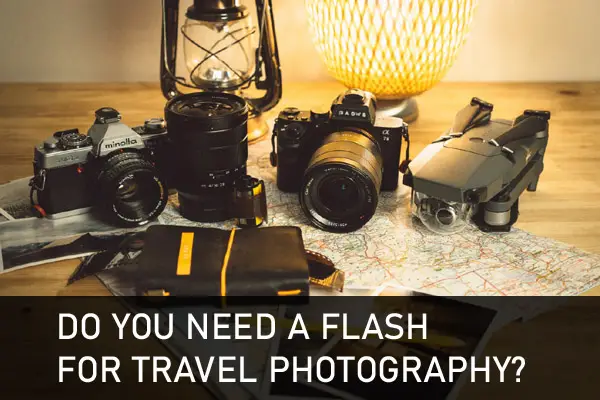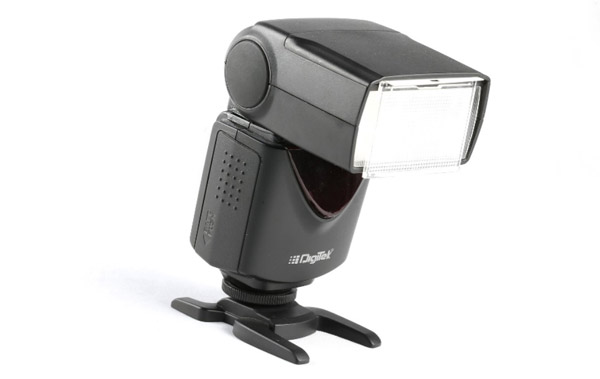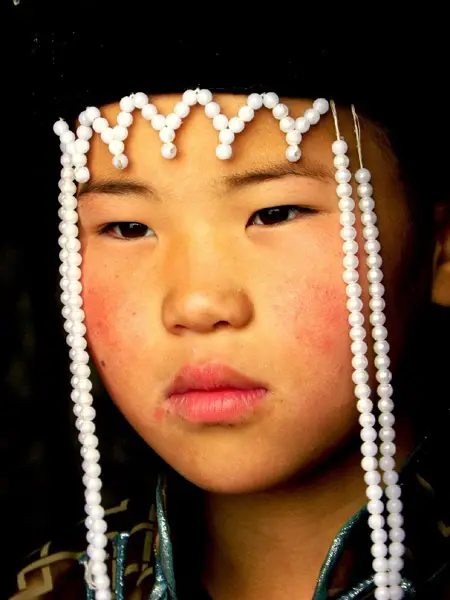Packing for a trip is arguably the worst part about travel. As photographers, not only do we have to choose which of our vast wardrobe of clothes to take with us, but we also have to decide which pieces of our ever-expanding portfolio of camera equipment to take with us. From picking which lenses and camera bag to remembering your spare memory cards, packing your photography gear for travel can be a nightmare. There is one decision, however, that can often make or break the standard of photographs you come back with. Do I need a flash for my travel photography?

The answer to whether or not to take a flash with you on your travels will be different for everyone based on a few things.
For starters there are several options to consider such as where you are traveling to and what kind of travel photography you are going to be engaging in. Not to mention if you actually have the room to carry and extra piece of equipment with you? However, taking the time to consider these questions before you travel will help you capture those unforgettable moments.
To help make that decision easier for you we have outlined everything you need to consider when deciding if you need a flash for travel photography.
Types of Flash
Before deciding on whether or not you need to take a flash with you on your trip it is important to understand the different types of flash that are available to you.
On Camera Flash
On camera flash, like the name suggests, is a flash that is attached to your camera. This is usually as a built-in pop-up flash or a flash unit that you attach to the flash hotshoe found on the top of the camera.
The built-in pop-up flash can be a great emergency flash for those who travel without a flash but find they need one to capture a certain shot such as a backlit scene. However, they are quite small and generally produce a harsh direct light which can result in subjects which look flat and unnatural.
A better option would be to use an external flash unit mounted to the top of the camera. Generally, these are more powerful than built in flashes and they also offer much more control to the photographer.
From adjusting the direction of the flash to changing the exposure compensation and when the flash fires, you will have far greater control of your final image. You can even combine them with a diffuser for even greater control of the light.
They can be a great option for shooting indoors or capturing those unique travel photography portraits.
Find the best flash unit for you by reading this article.
Off Camera Flash
Yes, you’ve guessed it, off camera flash is all about placing the flash unit somewhere else other than on the camera. This kind of flash gives you greater control over how the scene is lit and you can even incorporate more than one flash unit.

However, this kind of flash set-up will probably involve you lugging around extra equipment. Plus, you may need the help of other people to hold the flash units in the right place for example. So, unless you have specific shots in mind that require this kind of set-up it may be better to stick to on-camera flash if any.
Reasons to Use a Flash
A flash isn’t just handy to have for after the sun goes down but can also enhance many different types of images taken during daylight hours too.
Fill the Shadows
Have you ever tried to take a photo that is half in shadow and half in light and no matter what you do you can’t get the image exposed the way your eye sees it? Well, using a flash can help fill in the shadows without the need for overexposing the other areas of the photo.
Alternatively, you can use image bracketing to achieve the result. While this requires a little extra time during the editing process, it means that you don’t need to carry that flash around with you.
Capturing Great Portraits
If your travel photography style includes capturing stunning portraits of locals, then the use of a well-positioned flash may be exactly what you need.
A good portrait has clear separation between the subject and background. This can easily be achieved without a flash by using a shallow depth of field. However, by intentionally underexposing the image by one or two stops and using the flash to light the subject the separation between background and subject can also be achieved.

Poorly Lit Indoors
Sometimes your travels take you to places where both natural and artificial light are in low supply. For example, inside the home of a Maasai warrior is such a case. These situations can make shooting quite difficult without a flash. Even if you whack up the ISO the image can still be underexposed. Bringing a flash into the situation would make a huge difference to the final image.
It may also make the difference between attempting to take the shot and not even bothering.
Shooting at Night
Life doesn’t just stop as soon as the sun goes down so why should your travel photography?
Some types of night-time photography don’t require a flash, such as astrophotography, cityscapes and light trails, all of which make great compositions. However, if you want to capture the vibrant city streets once the sun has set there is definitely no better way than with the help of your trusty flash unit.

The extra burst of light will really help your subjects stand out and bring your images to life.
Alternative Ways to light Your Scene
While a flash can really add that extra edge to some of your travel photos if you do decide not to take one with you it isn’t the end of the world. There are a few different ways that you can still use the natural and artificial light in the scene to your advantage.
Make Better use of the Available Light
Travel photography can be hard. You often don’t have time to fit everything in and can’t often afford to spend hours and hours waiting to get that one shot in that one particular spot at the expense of everything else.
While a flash unit may help in some situations, it can often be just as easy to get creative and remember the basics. Make sure you get out for the best light of the day. Think about moving your subject around the scene to make the most of the light available or even just shooting from a completely different angle.
Sometimes by only taking limited equipment with you, you are forced to use your creativity more and that is where the magic happens.

Reflectors
But isn’t that just another piece of equipment for me to carry?
True, you can buy specific photography reflectors which are very useful. Some even fold really small which are great for travel.
But don’t worry, every object that isn’t black reflects light to some degree you just need to be a little creative. From a strategically placed hat, piece of paper to using the natural reflection you get from a river or lake, reflecting the available light you have may be a great way to get around not having a flash.
Diffusers
While light diffusers are traditionally used in conjunction with flash units there is no rule that says you cannot use them with other light sources.
As with reflectors, you can buy specific light diffusers. However, you can also make your own from things that you normally travel with. For example, you could diffuse the harsh light from a lamp or even a torch by covering it with a plain t shirt or a scarf. The subject can then be lit how you want it to be but there is no need to travel with a flash unit or diffusers!
At the end of the day whether or not you need to bring a flash with you for your trip is a deeply personal choice. It depends on where you’re going, what type of trip it is and also the type of photographer you are.
For example, if you are heading somewhere sunny and intend on taking mostly landscape shots, then you probably wouldn’t have much use for a flash. However, if there is likely to be lower levels of light or portraiture is more your style then a flash may be of use.
Whether you choose to use an in-built flash, an external flash or no flash at all, as long as you are comfortable using your equipment you are sure to capture some amazing photos of your travels.
Click this link to learn how travel can inspire your wedding photography.









3 comments